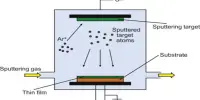A photonic integrated circuit (PIC) or integrated optical circuit (IOC) is a microchip that contains two or more photonic components that work together to form a working circuit. Light is detected, generated, transported, and processed using this technology. Photonic integrated circuits use photons (or light particles) rather than electrons, which are used by electronic integrated circuits. The primary distinction between the two is that a photonic integrated circuit provides functions for information signals imposed on optical wavelengths, typically in the visible or near infrared spectrum (850-1650 nm).
On a chip-scale platform, PICs enable the manipulation, generation, transmission, and detection of light signals. They are primarily used in optical communication applications such as telecommunications, data centers, and high-speed optical networks. PICs outperform traditional discrete photonic components in terms of size, power consumption, reliability, and integration density.
Indium phosphide (InP) is the most commonly used commercial material platform for photonic integrated circuits because it allows for the integration of various optically active and passive functions on the same chip. Simple 2-section distributed Bragg reflector (DBR) lasers, consisting of two independently controlled device sections – a gain section and a DBR mirror section – were early examples of photonic integrated circuits. As a result, photonic integrated circuits include all modern monolithic tunable lasers, widely tunable lasers, externally modulated lasers and transmitters, integrated receivers, and so on.
PICs are typically manufactured using semiconductor fabrication techniques such as lithography and etching to create waveguides and other photonic components on a substrate, which is frequently made of silicon, indium phosphide (InP), or gallium arsenide (GaAs). Various components are combined and interconnected to form complex photonic circuits capable of manipulating and routing light signals.
As of 2012, devices integrated hundreds of functions onto a single chip. Bell Laboratories pioneered in this field. The University of California at Santa Barbara, USA, Eindhoven University of Technology, and the University of Twente in the Netherlands are the most notable academic centers of excellence for photonic integrated circuits in InP.
PICs have transformed optical communication by enabling high-speed data transmission and dense optical component integration. Telecommunications, fiber-optic networks, optical sensing, biomedical devices, quantum computing, and optical interconnects for high-performance computing are just a few of the applications.
A 2005 discovery demonstrated that, despite being an indirect bandgap material, silicon can still be used to generate laser light via Raman nonlinearity. Because such lasers are optically driven rather than electrically driven, they require an additional optical pump laser source.
PIC technology advancements have led to photonics advancements and have the potential to significantly impact various industries by providing efficient and scalable solutions for handling light-based signals.
















